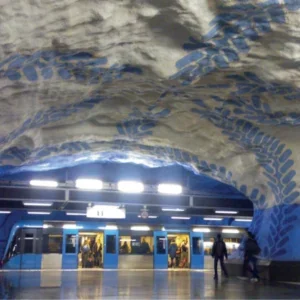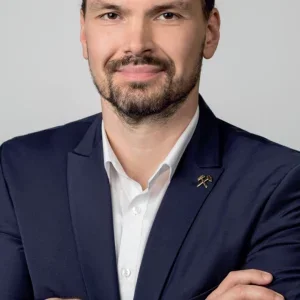The Brenner Base Tunnel (BBT) is a railway line running through the Alps, connecting Austria and Italy. At 64km long it will be the longest underground railway connection in the world; a pioneering work of engineering.
In total the BBT system will include about 200km of tunnels, including the two main tubes, the exploratory tunnel, four lateral access tunnels and cross-passages. More than 20km have already been built. Completion is planned for 2025 and the start of operations for 2026.
The project company is BBT SE. The project will be financed by the European Union, Austria and Italy. The costs were estimated in January 2010 at EUR 11bn (USD 13.46bn). The European Union supports the expansion of this transnational railway and considers it a top priority. The BBT is at the heart of the Berlin-Palermo north-south corridor; also known as the TEN-1 axis.
The BBT will be primarily for freight transport, allowing a shift of traffic from road to rail. Passenger trains will also be able to travel through the tunnel. Due to an almost horizontal gradient, tunnel trains will no longer have to cope with steep up and down slopes.
History and situation
The BBT project was started in 1992 by Karl Van Matt, as part of the European north-south corridor, and it will eventually form a crucial link on the 2,200km rail link corridor between Berlin and Palmero. This first construction phase of the 64km long tunnel was started in 2007 and is planned for completion in 2026 at a total cost of EUR 8bn (USD 9.79bn).
The existing rail corridor running over the Alps is the most overloaded traffic corridor, and is continually under development. It has inclines of up to 28mm/m, resulting in slow movement of rail freight. The BBT will remove the steep inclines, and so dramatically increase the volume of freight along the European north-south corridor.
The northern portal of the BBT is at Innsbruck in Austria, the southern portal at Fortezza in the north part of Italy. The scale of the project creates numerous cross boarder challenges. The BBT connects two different countries creating challenges by linking together two different cultures, different languages, five different voltages, different codes of practice and three different signalling systems. The BBT developed a cross border approach to overcome some of these challenges.
The corridor approach was needed in order to organise the rail logistics. The green corridor approach was published last year. This started in 2007 with the so called Brenner Based Platform. An action programme was signed on 18 May 2009 with all parties involved in the BBT (German, `Austrian and Italian ministries, regions governments in Munich and Verona, and Rail Companies DB, OBB and RFI) with more than 80 points that had to be respected by each party. Thus was formed the first European Company, which is chaired by two persons. Like a marriage, there are both good and hard times.
A planning approach was undertaken starting two years ago to include the environment issues, leading finally to the environmental impact approval applicable to both countries. This required dealing with two different approval parties and regulations. Some 3,800 plans and 44,000 pages were produced. This was delivered to the approval panels in both countries and was finally approved. This arduous task left Bergmeister with the impression that the purpose of these submissions was not serving the environment, but merely fulfilling regulations.
Up to code
It was necessary to produce a guide design, to create a basic platform to provide a very clear approach in how to deal with the project. This led to the first strategy and the guide design proved very useful for such an international project in order to bring together different codes. For example there are now Eurocodes, and Eurocode Two established a coefficient for concrete of 1.5, but in Italy, where the financial situation is very bad, they decided to increase the coefficient to 1.6.
A working life for the structure of 200 years was established, which is quite unusual. Detailed interface plans are currently being developed including required tolerances.
With a total underground length of 64km it will be the longest transport tunnel in the world. There are two main tunnels of driven diameter of 9.5m, with a finished diameter of 8.1m. The distance between the tunnels is 70m, this was increased from the 40m spacing on the Gotthard tunnel. Also lessons were learnt from the Gotthard tunnel on classification of rock.
In addition there is the exploratory tunnel which is providing information on the rock. This exploratory tunnel will also be used for drainage of the whole tunnel system, with connections every 2km. It was also discovered that this exploratory tunnel could also be used to run power lines and as a service tunnel. In addition, every 330m there are connecting transfer tunnels, which house some technical equipment and will be used for emergency situations, allowing personnel to walk through to the safe tunnel and wait for the arrival of a train.
The first study of such a tunnel was carried out in 1847. The Austrian Governor asked an Italian engineer Giovanni Qualizza for a proposal to cross the Alps. He came up with a 32km tunnel, but at that time the technology was not available to carry out the work. After the Second World War a similar exercise was carried out, and finally in 1999 the so called preliminary project commenced. The exploratory tunnel was started in 2007 and is now in the third and final phase.
This project requires approval by both governments, and on an annual basis a cost analysis is carried out. This helps to monitor and control the project costs. For such a large project there is a long approval process, but it is hoped that the long planning stage will result in a shorter more efficient construction phase.
More than 26km of drilling has been carried out, more than 0.4 times the length of the tunnel. A lot of time has been spent on this. In the surrounding zone of Innsbruck is the so-called quartz finitz which is a metamorphic rock with a uniaxial compression strength of approximately 30 to 40MPa. In the middle zone, is a schist, which is a fine grain rock created from the sea sediment approximately 120 to 140 million years ago.
On the south side of the tunnel is a very strong crystalline magnetic granite rock, with strengths of approximately 120 to 150MPa. This rock will be utilised for batching concrete.
Processes
The project will produce approximately 70Mm3 of excavated spoil, of which currently only 25 per cent is planned for reuse for concrete and engineering works, but with research studies and extra effort, it is hoped to increase this amount to up to 40 per cent.
The cost analysis was carried out in a very careful way as it was recognised that engineers often underestimate costs. Along the Austrian side of the tunnel more than 7,000 contracts need to be signed with landowners, but in Italy, the situation is different resulting in signing only 30 contracts. This is big difference, and in Italy the excavated material can be sold, whereas in Austria the owners require payments for this.
External experts have been used to review the cost model, and it is felt that a very clear picture of costs and risks has now been developed. A very sophisticated risk analysis was carried out which has added seven per cent to the contract costs, but it is believed that only 1/2 of the risks have been analysed. Another eight per cent has been added to cover these unknown risks. An Austrian Railway Company guideline has been used to work out the risks. The overall costs were calculated at EUR 8bn (USD 9.8bn) in January 2012. This overall cost is reviewed on an annual basis and is then communicated to the owner.
The project itself started approximately 10 years ago when the approval process required a groundwater survey be undertaken. Since 2001 more than 1,000 water sources have been and continue to be monitored, to enable a full analysis be carried out of the groundwater, in the zone where the tunnel will be driven. Macro modelling has been used to enable better understanding. More than 100km2 has been modelled, to include every water source known at the moment, and studies were carried out both with and without the tunnel. By creating a grouted ring zone, the permeability of the rock can be reduced by approximately 100 (a factor of two), which will be implemented if a problem occurs during tunnelling.
Construction started in August 2007 and more than 20km of the exploratory tunnel and the external access tunnels have been driven. The intention is to complete all tunnels by 2025, and to start train operations on the 25 September 2025, exactly 200 years after Stephenson came up with the first train idea, which will be a very nice symbolic gesture.
In addition to almost 200km of tunnel to be excavated, also be constructed are the worksites, the connections from the Brenner Highway to the site areas, and the connections to the spoil disposal sites, some of which are in tunnels.
Driving forward
Some 75 per cent of the tunnel will be driven by mechanical methods and 25 per cent will be driven conventionally. On the northern side of the tunnel NATM is being used, which is also providing an opportunity to explore the rock condition, and use this information to provide knowledge and experience for driving the main tunnels.
Studies are in progress to find the right mix for the fibre reinforced sprayed concrete lining, to enable accurate analysis of the ongoing design and planning works. Within the BBT company there are geologists, working seven days per week in the tunnels, mapping the geological conditions to assess the actual situation. The expected geology was quite different from that actually found.
On the southern part of the tunnel, a double shield machine has already excavated over 10km of tunnel, and there have been some failures of the tunnel lining. Therefore monitoring points have been installed to enable more accurate analysis of the loads being experienced, in order to calculate the stresses, and produce the right tunnel model. This will be helpful for the overall lifetime design of the tunnel, and will enable the theoretical model to be upgraded through experience.
There will be two main planning groups, one on the Austrian and one on the Italian side. It is expected that this will provide a common working approach to the planning of the works, and provide good practices and shared initiatives. There are planning applications required for the next phase of the works. In the southern section of the tunnel in Italy, over GBP 45M (USD 70.3M) will be spent on two planning applications, which is a very large amount, for the next 10 years of construction works.
Community and environment
It is very important on such a project to respect the environment, not only underground, but also on the surface. The surface worksites have been very carefully selected and at the moment more than 22 students are doing their PHDs and assisting on the project.
Open transparent communication with the public is also very important, and there are two communication centres, one in the south and one in the north.
The north centre at Innsbruck Railway Station has already had more than 20,000 visitors in the last year. The BBT is also engaging with the local community as a minimum on an annual basis, in order to provide the feeling that the project is growing with them.
Transparent communication during all phases of a big project is vital. Bergmeister claims the intention is to construct the longest planned underground structure in the world, through guideline design, a homogeneous planning basis, and through discussion and using experience from other projects, and simulation modelling, to bring the project to a successful completion.






